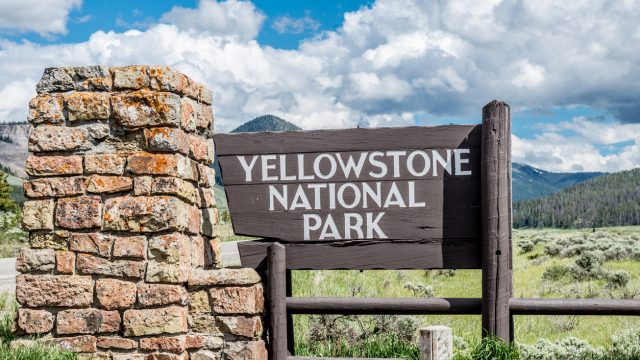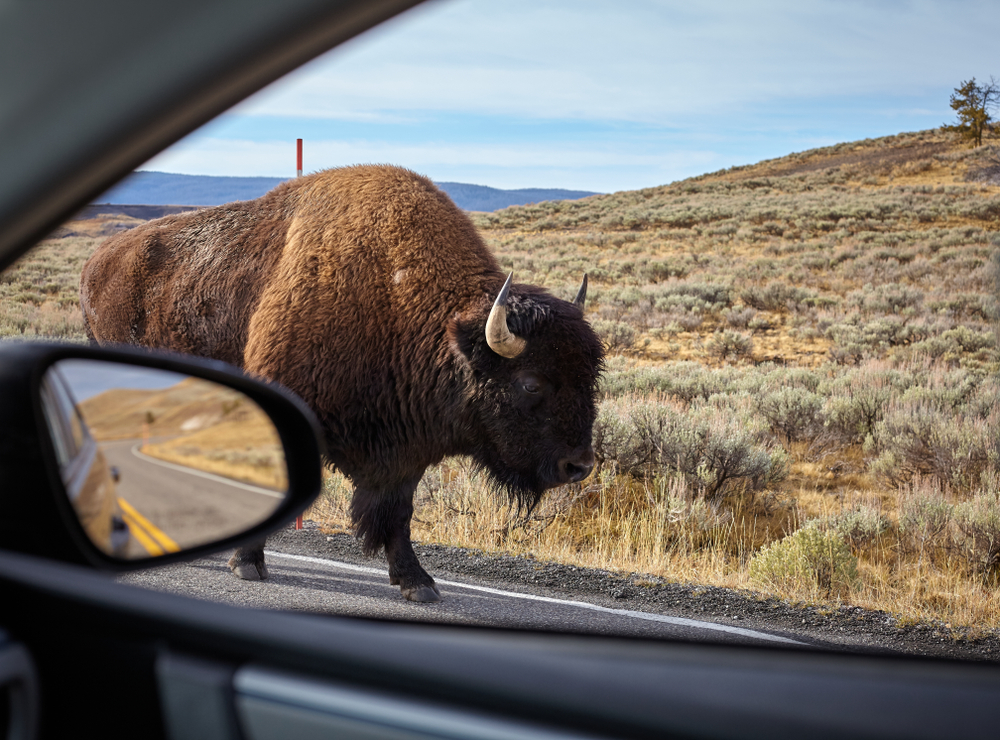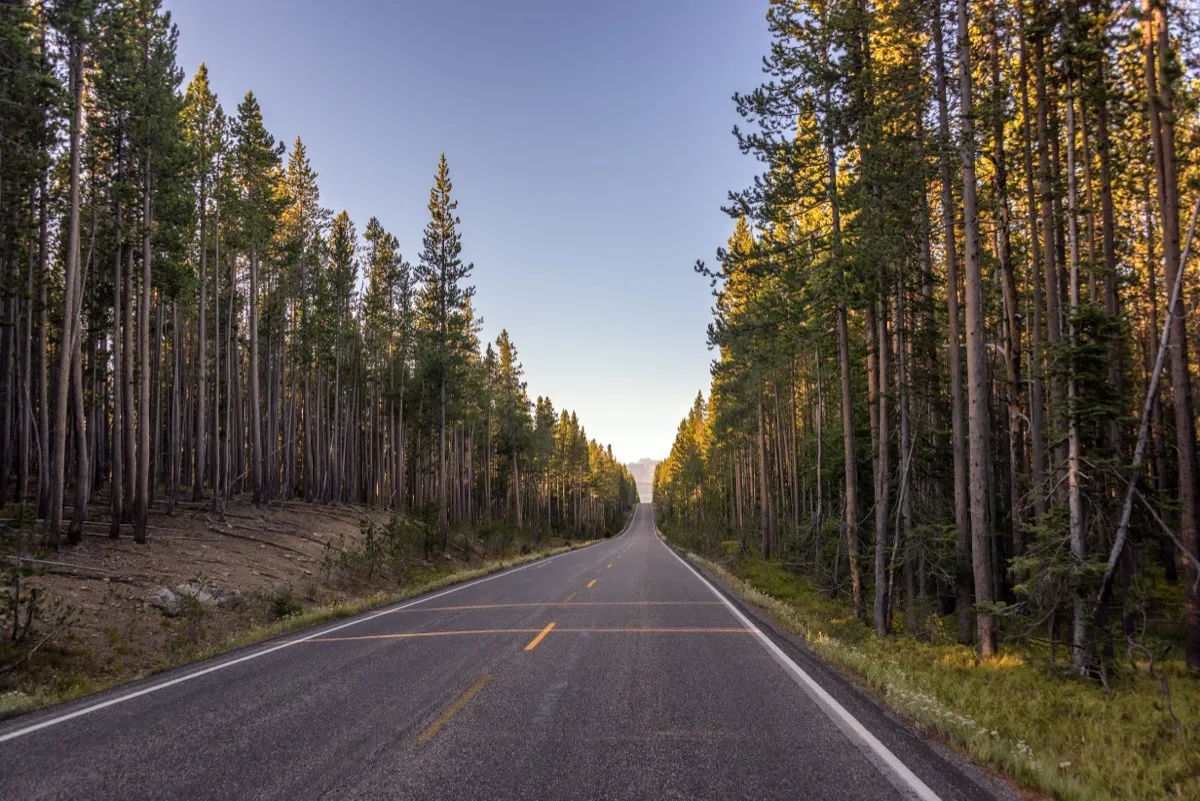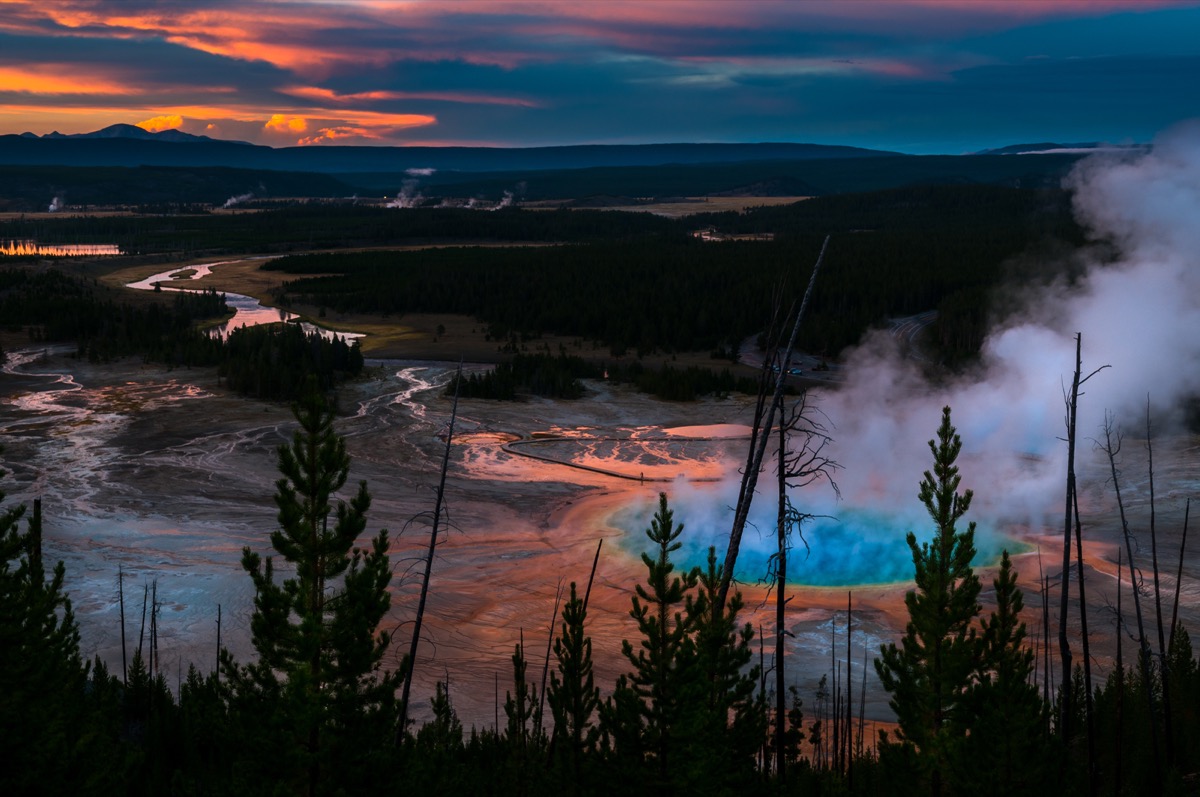Yellowstone National Park’s Roads Are “Melting”—Here’s What That Means for Visitors

For anyone looking to experience nature to its fullest, it’s hard to do much better than Yellowstone Natural Park. The beloved preservation site is home to scores of unique wildlife, stunning views, millions of acres for hiking and exploration, and even world-famous geysers. But the same geothermal conditions that make unforgettable sights such as an eruption at Old Faithful possible can also have an effect in some surprising ways—including occasional reports that roads around Yellowstone are “melting.” Read on to see what this surprising occurrence could mean for visitors to the beloved natural site.
READ THIS NEXT: The 5 Newest National Parks You Need to Add to Your Bucket List.
Natural phenomena and hazards are a part of everyday life at U.S. National Parks.

The National Park Service (NPS) exists primarily to protect nature from humankind’s effects on the landscape and provide a sanctuary for all kinds of wildlife. And while this provides an unfiltered connection to the environment, it also carries with it the potential hazards and risks that come with the wild, including several that have recently elicited safety alerts.
On June 30, Yellowstone officials reminded the public that “bison are wild and unpredictable” after two guests were gored by the large animals in three days, bringing the season’s total count up to three at the time. Months later, on Aug. 20, officials alerted visitors to a seasonal event known as “rut,” when bison slowly migrate within the park to mate. In a Facebook post, representatives for Yellowstone wrote that “bulls are on high alert and can get aggravated easily” during the movement and reiterated it was important to “always stay further than 25 yards away from all wildlife.”
On Aug. 12, officials from Yosemite National Park issued a safety alert of their own due to “summer branch drop” (SBD) among the site’s trees. In a Facebook post, they warned visitors to “quickly get away from the area” if they heard a loud crack nearby and reminded campers not to set up their tents “directly underneath large oak branches.”
And on Aug. 29, the NPS issued a news release announcing that a 44-year-old man had died after he slipped and fell from the North Rim of the Grand Canyon while hiking. According to the agency’s statement, the man had been off-trail when the accident occurred. They advised visitors to respect all placed barriers, to stay at least six feet from the canyon’s rim, and to “watch foot placement and look for trip hazards” while on the site. And now, park officials are addressing another natural occurrence in the parks.
Officials say that the legend of “melting roads” in Yellowstone is true—to a degree.

With over two million acres within its boundaries, Yellowstone is a sizeable piece of land that many visitors choose to explore by driving through its many miles of paved roadways. But in recent years, stories of “melting roads” in Yellowstone have started to make the rounds online, with some fearing that the increasing ground temperature is a sign of an impending volcanic disaster.
But according to officials, the geothermal activity that has helped make the park famous is present beyond the brightly colored pools and stunning geysers that dot the landscape. In certain areas, the ground itself gets pretty hot and can become a “recipe for trouble” when asphalt is laid down on it—especially during the warmer summer months when it’s also heated from above by the sun, according to a post from the U.S. Geological Survey’s (USGS) Yellowstone Volcano Observatory.
“The result of this heating is that the asphalt softens and can flow, like silly putty,” they write. “This can create ‘ripples’ in the road surface, and potholes are more likely to form. When vehicles drive over the warmed asphalt, the road can suffer significant damage.”
RELATED: For more up-to-date information, sign up for our daily newsletter.
An incident in 2014 created a panic, but was based in misinformation.

Issues with melting roads in Yellowstone brought on by high ground temperatures have been a problem for decades, according to USGS. But in 2014, a series of incidents went viral that spurred unnecessary panic after theories of an imminent apocalyptic volcanic eruption began to spread.
It all began with a 4.8-magnitude earthquake that was listed as the strongest tremor to hit the park since 1975, the USGS writes. Soon after, a video of bison running in the park began to spread online, with some sources misinterpreting the animals’ behavior to mean they were “running for their lives because of impending volcanic activity.” But when reports of road closures in Yellowstone due to melting asphalt began to fuel doomsday theories—despite being a relatively common occurrence on Firehole Lake Drive where the temporary shutdown occurred—experts jumped in to set the story straight.
“The spate of misrepresented information even prompted the Yellowstone Volcano Observatory to put out a news statement discussing the recent observations, how they were being misinterpreted, what was being flat-out made up, and that there was no sign of any imminent volcanic activity,” the USGS writes. “And as usual, volcanologists were right and misinformation sources were wrong—that’s why it’s called misinformation!”
Yellowstone visitors could still expect to see the melting roads, but some steps are being taken to prevent them.

Officials say that even though the warped asphalt isn’t a sign of impending doom, the park must still cope with the environmental condition and make special accommodations. In some places, such as the roads adjacent to Beryl Spring, maintenance and engineering staff had been forced to re-engineer some infrastructure and have even installed insulating foam in some areas where the ground becomes hot. But they clarify that besides driving inconveniences, there’s absolutely no reason to panic.
“Do roads sometimes ‘melt’ in Yellowstone National Park? The phrasing is a bit melodramatic, but indeed, roads can be impacted by the thermal ground they traverse,” USGS writes. “This is nothing new, nor a sign of imminent volcanic activity.”
“Still pretty amazing. Just not worrisome from a volcanic point of view,” the agency concludes.